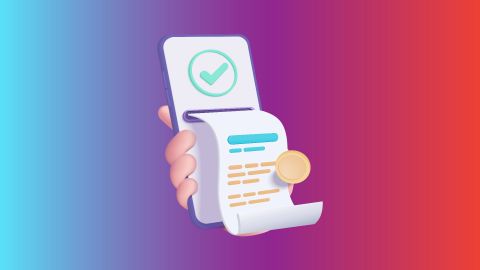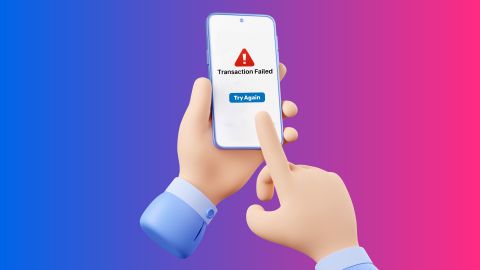Find the average power consumption of household appliances and learn practical tips to reduce energy costs. Includes a detailed usage chart and cost calculation guide.
Average electricity usage by appliances
-
Average electricity usage by common appliances
Understanding the average electricity usage of common household appliances is crucial for managing energy consumption and costs. Each appliance has a specific power rating, typically measured in watts (W), which indicates how much electricity it consumes while operating. The total energy consumed can be calculated based on the power rating and the duration of use, usually expressed in kilowatt-hours (kWh).
For example, a refrigerator, which runs continuously, may consume between 100 to 250 watts. In contrast, an air conditioner can use around 2000 watts when operating. Regularly used appliances like washing machines and dishwashers also contribute significantly to electricity bills, especially when used frequently or inefficiently. By knowing the average usage of these appliances, homeowners can make informed decisions about their energy consumption habits and identify opportunities for savings.
For those looking to manage their electricity expenses better, platforms like Bajaj Pay offer convenient options for electricity bill payment, allowing users to stay on top of their energy costs.Importance of knowing appliance energy consumption
Knowing the energy consumption of household appliances is essential for several reasons:- Cost management: Understanding how much electricity each appliance uses helps households budget their energy expenses more effectively.
- Energy efficiency: By identifying high-energy-consuming appliances, homeowners can make informed choices about upgrades or replacements with more energy-efficient models.
- Environmental impact: Reducing energy consumption not only lowers bills but also decreases the household's carbon footprint, contributing to environmental sustainability.
- Informed usage: Awareness of appliance usage encourages mindful consumption practices, such as running dishwashers or washing machines only when full.
- Performance monitoring: Tracking energy use can help identify malfunctioning appliances that may be consuming more power than necessary, prompting timely repairs or replacements.
Factors influencing appliance energy consumption
Several factors influence the energy consumption of household appliances:- Power rating: The wattage rating of an appliance directly affects its energy use; higher-rated appliances consume more electricity.
- Operating hours: The duration an appliance is in use significantly impacts total energy consumption; longer usage translates to higher costs.
- Efficiency ratings: Appliances with higher efficiency ratings (e.g., ENERGY STAR certified) consume less energy for the same output compared to standard models.
- Load type: The type of load an appliance handles (e.g., resistive vs. inductive) can affect its efficiency and overall power consumption.
- Ambient conditions: External factors such as temperature can influence the performance of appliances like refrigerators and air conditioners, potentially increasing their energy use.
- Maintenance and age: Older appliances may operate less efficiently due to wear and tear, leading to increased energy consumption over time.
Power consumption chart for appliances
Appliance Power Consumption (Watts) Average Usage (Hours/Day) Daily Energy Consumption (kWh) Refrigerator 225 24 5.40 Washing Machine 500 1 0.50 Dishwasher 1200 1 1.20 Air Conditioner 2000 8 16.00 Electric Oven 2500 1 2.50 Television 100 5 0.50 Microwave 1200 0.5 0.60 Water Heater 4500 2 9.00 Ceiling Fan 75 6 0.45 Laptop 50 8 0.40
This chart provides a comprehensive overview of common household appliances, their power consumption rates, average usage times, and daily energy consumption in kilowatt-hours (kWh).Energy-saving tips for common household appliances
Use energy-efficient models: Invest in ENERGY STAR-rated appliances that consume less electricity.
Optimise usage: Run dishwashers and washing machines only with full loads to maximize efficiency.
Adjust settings: Set refrigerators and freezers to optimal temperatures; typically around 37°F (3°C) for refrigerators and -2°F (-18°C) for freezers.
Unplug unused devices: Disconnect chargers and electronics when not in use to prevent phantom loads.
Regular maintenance: Clean filters in air conditioners and dryers regularly to maintain efficiency.
Use timers: Employ timers or smart plugs to control when appliances operate, especially during off-peak hours when electricity rates may be lower.Comparison of old vs. new energy-efficient appliances
Appliance Type Old Model Power Consumption (Watts) New Energy-Efficient Model Power Consumption (Watts) Refrigerator ~300 ~200 Washing Machine ~1000 ~500 Dishwasher ~1500 ~1200 Air Conditioner ~3000 ~2000 Electric Oven ~3500 ~2500
This table highlights the significant differences in power consumption between older models and new energy-efficient appliances, demonstrating potential savings on electricity bills.Seasonal variations in appliance energy usage
Seasonal changes can significantly impact appliance energy usage:
Summer months: Air conditioners consume more electricity as they work harder to cool homes during hot weather.
Winter months: Heating systems increase energy demand; electric heaters can lead to higher bills during colder months.
Spring/fall transition: During these seasons, heating or cooling needs may decrease, leading to lower overall energy consumption.
Holiday seasons: Increased use of cooking appliances and decorative lighting can spike electricity usage during holidays.
Understanding these seasonal variations helps homeowners anticipate changes in their electricity bills and plan accordingly.Tools and resources for measuring appliance usage
To effectively monitor appliance energy usage:- Electricity usage monitors: Devices that plug into outlets to measure real-time power consumption of connected appliances.
- Smart plugs: Allow users to track power usage via smartphone apps while providing control over when devices operate.
- Energy audits: Professional assessments that evaluate overall home energy efficiency and identify high-consumption areas.
- Utility company tools: Many utility providers offer online tools or apps that track household energy usage patterns over time.
How to calculate energy costs from appliance usage
To calculate the cost of running an appliance:- Determine the appliance's wattage (found on its label).
- Estimate the average daily usage in hours.
- Use the formula:
- Daily Cost=(Wattage×Hours Used/1000)×Cost per kWh
- Multiply by the number of days in a month for monthly costs:
- Monthly Cost=Daily Cost×Days in Month
Conclusion and best practices for reducing usage
Reducing electricity usage from household appliances is not only beneficial for lowering bills but also contributes positively to environmental sustainability. By understanding average appliance usage, implementing energy-saving practices, and considering upgrades to more efficient models, homeowners can significantly decrease their overall energy consumption. Regular monitoring and mindful usage are key strategies in achieving long-term savings on electricity costs while promoting responsible energy habits within the home environment.
-
Recharge and Pay Bills
Mobile Prepaid
Mobile Postpaid
Broadband Bill Payment
Electricity Bill Payment
Bajaj Finserv App for All Your Financial Needs and Goals
Trusted by 50 million+ customers in India, Bajaj Finserv App is a one-stop solution for all your financial needs and goals.
You can use the Bajaj Finserv App to:
You can use the Bajaj Finserv App to:
- Apply for loans online, such as Instant Personal Loan, Home Loan, Business Loan, Gold Loan, and more.
- Explore and apply for co-branded credit cards online.
- Invest in fixed deposits and mutual funds on the app.
- Choose from multiple insurance for your health, motor and even pocket insurance, from various insurance providers.
- Pay and manage your bills and recharges using the BBPS platform. Use Bajaj Pay and Bajaj Wallet for quick and simple money transfers and transactions.
- Apply for Insta EMI Card and get a pre-approved limit on the app. Explore over 1 million products on the app that can be purchased from a partner store on Easy EMIs.
- Shop from over 100+ brand partners that offer a diverse range of products and services.
- Use specialised tools like EMI calculators, SIP Calculators
- Check your credit score, download loan statements and even get quick customer support—all on the app.
Frequently asked questions
How can I find the power consumption of an appliance?
Check the appliance's wattage label or user manual for its power rating.
What is the easiest way to reduce energy consumption?
Switch to energy-efficient appliances and optimise usage habits.
How is energy consumption measured?
Energy usage is typically measured in kilowatt-hours (kWh), based on wattage and usage duration.
Which appliances consume the most electricity?
High-power appliances like air conditioners, water heaters, and electric ovens typically consume the most energy.
Do older appliances use more electricity than new models?
Yes, older appliances are generally less efficient and consume more electricity.
Show More
Show Less




